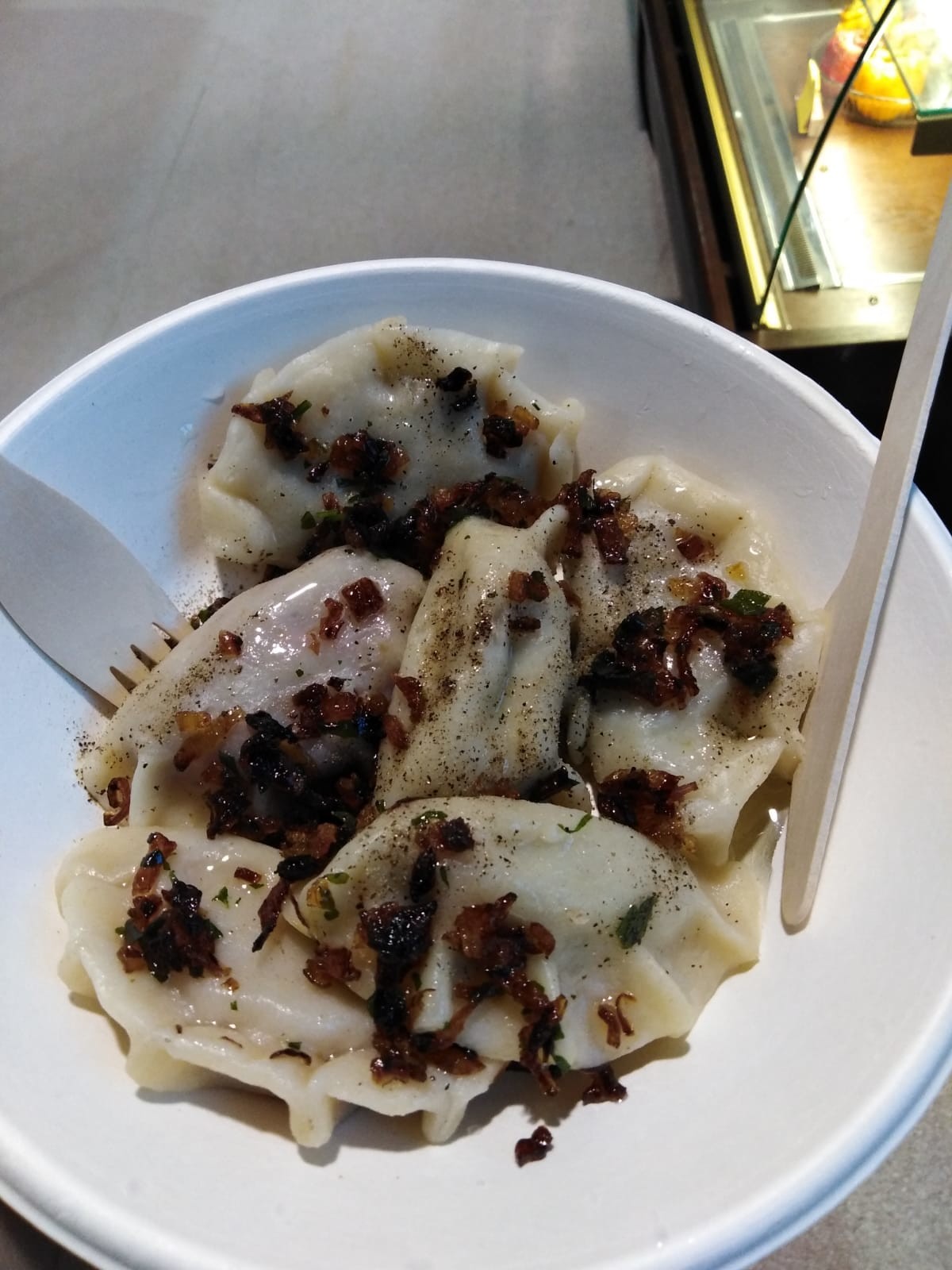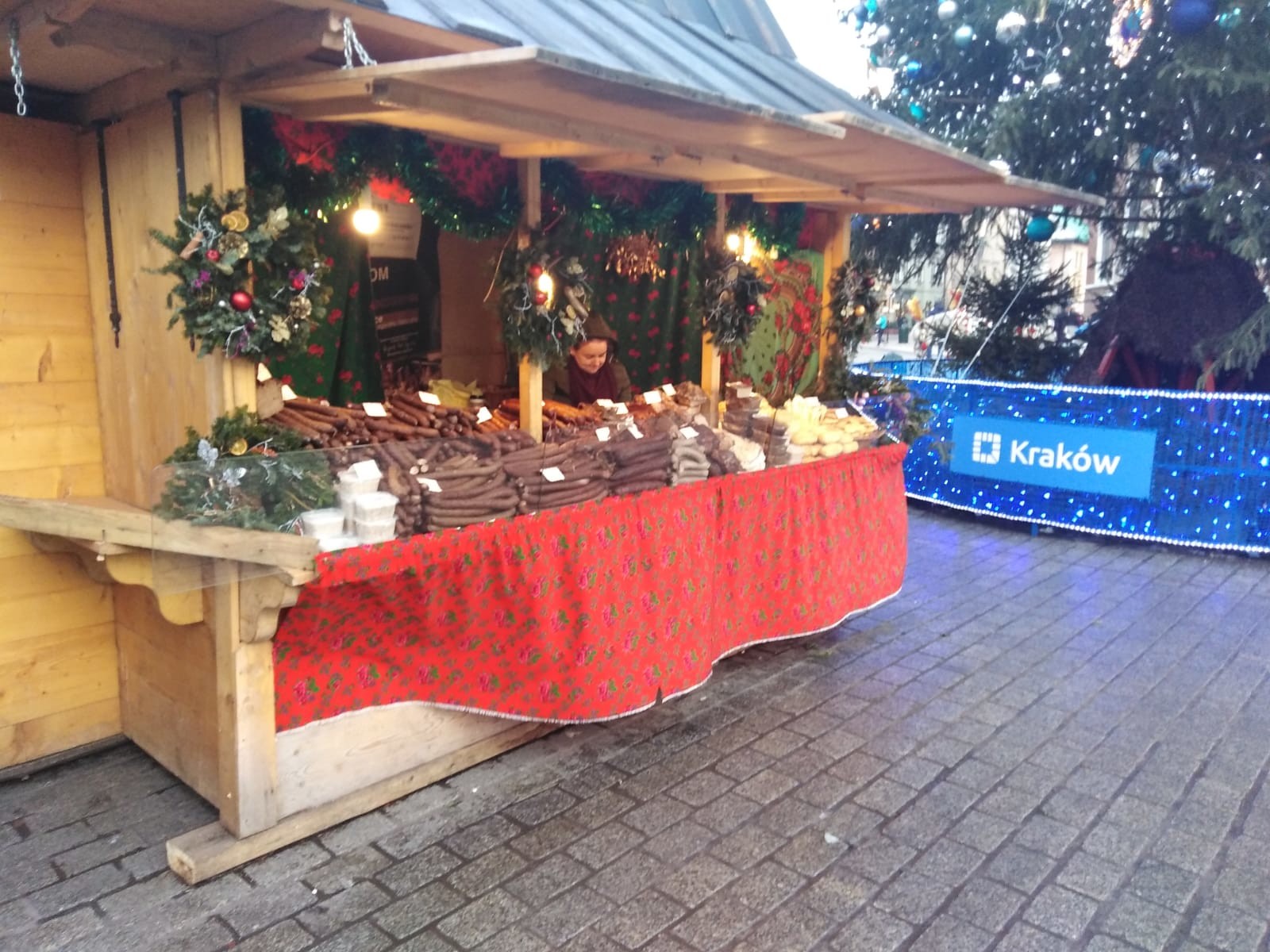Polish gastronomy
In this first blog entry about Poland and the things that I learnt and discovered during my time there, I am going to talk about Polish gastronomy. It is very different to Spanish cooking, there are even some flavours that can sometimes surprise you or that you will completely dislike, though it always depends on your personal likes and preferences.
Polish gastronomy has a Slavic, German, Turkish, Hungarian, Jewish and French influence. So this is why if you travel to neighbouring countries such as Czech Republic, Hungary or Germany, you will find the same or very similar dishes. This type of cooking is characterised by having quite filling meals, due to the low temperatures that they usually have in Poland and the other countries that I mentioned.
What are in the breakfasts and snacks?
The breakfasts are really big; the makeup of the dishes reminds me a little of the typical English breakfast with beans, sausages and the rest. Normally a Polish breakfast is made up of bread, sausages, scrambled eggs... normally accompanied with teas (normally black tea with lemon) or coffees, which are usually weaker than the ones in Spain since they add a lot of milk or other stuff. There is also another kind of breakfast which is quick and to take away, very common with university students and just anyone. In the faculty, supermarkets, bakeries and basically any place you will find sandwiches or bagels, as many vegetable ones as with any kind of meat and it is very common to see people eating them during the breaks; or in the street when walking somewhere.
As for snacks or lunch, there is a kind of Polish menu which is excellent which is made up of soup, a main dish and a dessert.
Soups are very famous in this country, especially in winter, and you can find all kinds; the most common ones are vegetable, mushroom, beetroot (which you will find everywhere) goulash, others with sausages and potatoes, etc. One of the most special ones is a soup served inside of bread in the shape of a saucepan, something which you have to try before going no matter what. In Poland there are many street markets, for Christmas and celebrations, where you can buy all of these kinds of soup from wooden huts. The soups separately are very cheap, you can get one for around 2 euros.
The main dish consists of: meat or fish, with two sides. The first is usually mashed potatoes, roast potatoes or chips, rice or buckwheat, and the second will be a beetroot salad, carrot or shredded cabbage. Normally it has a sweet taste which I love, but you have to be careful if you don't like vinegary flavours because sometimes in some places, they do the cabbage-like that as a starter or as a side dish. The truth is that meat is usually what they will offer you and what you will order, there are always less fish options.
Polish people are experts in all kinds of cakes even in places you wouldn't expect it. The cafes and restaurants have lots of really eye-catching cake options, I could spend hours looking at the bakery windows. They are usually a lot more complex than the desserts in Spain.

This menu is accompanied by a kind of cold tea infusion with a taste of strawberry lollipops, which tourists don't usually love but you will see all of the Polish people with a glass while they eat: as well as it usually being really cheap or even free.
The best thing of all of this is that Poland is a very cheap country and you can get this menu for 17 zloty, which comes in at around 4 euros. An excellent and cheap place is Gospoda Koko, in the centre of Krakow.
Typical Polish food and dishes
- As I said before, there are many types of soups but the most common and special ones are the beetroot soup (sometimes with pierogi or dumplings inside) which can also be served in a glass to drink it and the soup inside of bread in the shape of a saucepan.
- Pierogi. The pierogi are like empanadillas but cooked instead of fried. However, sometimes you can also find them fried, although I recommend having the cooked ones. Normally they are served with a bit of fried onion on top and you can find many types: mushrooms and cabbage, ruskie (with potatoes and cheese), meat, spinach and cheese and even sometimes sweet ones with strawberries, blackberries, etc. Sometimes you can also find them inside the beetroot soup. There are shops which just sell pierogi and you can also find them in any supermarket. The price of the dishes depends on how many you order, but one with 10 pierogi could cost about 4 euros.

- Smalec. It is something that not everyone usually likes, it is often served as a starter. It is lard with onion which is spread on bread with pickles on top. It is often served at Christmas markets and at parties.
- Tatar. It is minced meat which is served with a raw egg yolk on top and onion.
- Kotlet schabowy. It is a huge breaded pork steak, due to pounding the meat until it stretches. It is also common in other countries and it is served with a slice of lemon to squeeze on top.
- Kielbasa. These are typical Polish sausages. You can find these sausages in the markets and they are kind of similar to chorizo, really big and served with bread.


- Placki ziemniaczane. These are savoury pancakes made out of potatoes and eggs.
- Pretzel: They are circle-shaped pieces of bread which are sold on literally every corner in the centre of Krakow and also outside of the centre, for less than 50 cents. They are served with coarse salt, sesame, pis and seeds etc; perfect for having something that is cheap and quick to eat outside. They sell them in little blue stands which close once they have sold everything for the day.
- Hot chocolate. This is something that you can order in cafes, chocolate-only restaurants or even vending machines. It is the best thing on a cold day.
- Ice-creams (lody). Ice-creams are very popular in Poland, even in the winter. The centre is full of ice-cream shops with so many options, including vegan ones. All kinds of flavours, fruit, vanilla, chocolate...
- Roast potatoes with mushrooms. This is delicious and they have a way of flavouring it that I love. You can also find this in all the markets.
Personally, I love Polish food because they have quite a lot of vegetarian options, even though there are also lots for meat lovers. In these street and Christmas markets there is a characteristic smell, which is also there when you enter a traditional restaurant; which stays in your mind and transports you there even when you're not there anymore.
Photo gallery
Content available in other languages
- Español: Gastronomía polaca
Want to have your own Erasmus blog?
If you are experiencing living abroad, you're an avid traveller or want to promote the city where you live... create your own blog and share your adventures!
I want to create my Erasmus blog! →







Comments (0 comments)